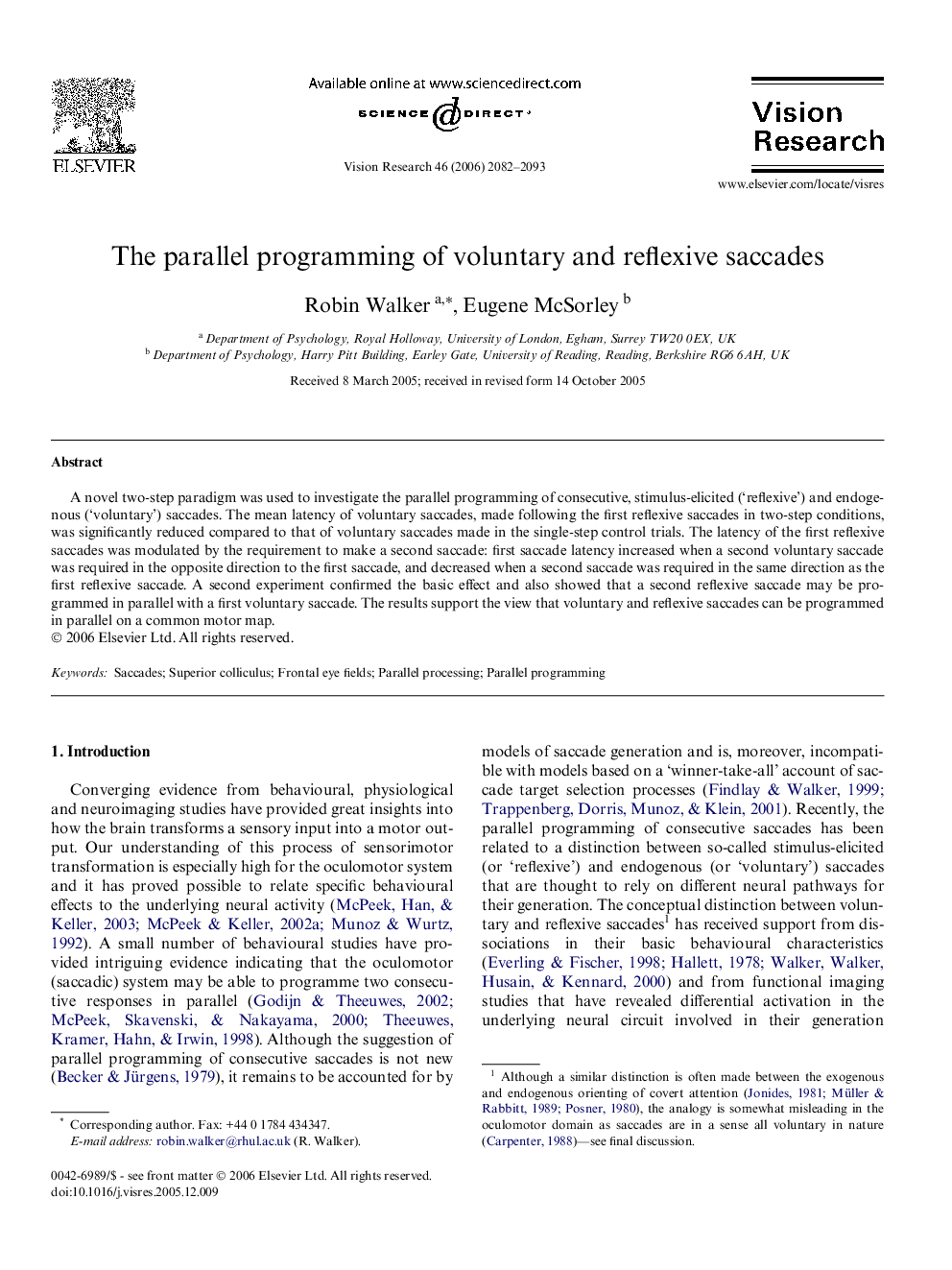| کد مقاله | کد نشریه | سال انتشار | مقاله انگلیسی | نسخه تمام متن |
|---|---|---|---|---|
| 4035777 | 1263548 | 2006 | 12 صفحه PDF | دانلود رایگان |

A novel two-step paradigm was used to investigate the parallel programming of consecutive, stimulus-elicited (‘reflexive’) and endogenous (‘voluntary’) saccades. The mean latency of voluntary saccades, made following the first reflexive saccades in two-step conditions, was significantly reduced compared to that of voluntary saccades made in the single-step control trials. The latency of the first reflexive saccades was modulated by the requirement to make a second saccade: first saccade latency increased when a second voluntary saccade was required in the opposite direction to the first saccade, and decreased when a second saccade was required in the same direction as the first reflexive saccade. A second experiment confirmed the basic effect and also showed that a second reflexive saccade may be programmed in parallel with a first voluntary saccade. The results support the view that voluntary and reflexive saccades can be programmed in parallel on a common motor map.
Journal: Vision Research - Volume 46, Issue 13, June 2006, Pages 2082–2093